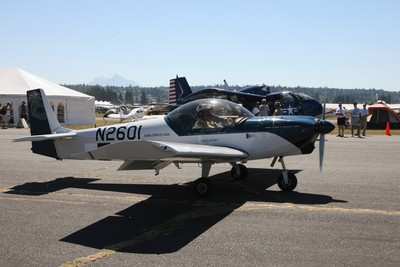Jumping Out Of A Bonanza Into An S-LSA Seems Like It Should Be A Snap, But In Reality, It May Not Be
As an already certificated pilot, when we hear the term, “transition training,” we commonly associate it with moving from a familiar airplane to a more complex airplane. Because special-light sport aircraft (S-LSA) have simplicity regulated into their design, it’s easy to not correlate them with the need for transition training. After all, aren’t they just little two-place planes like a Cessna 152?

The short answer to this question is, no, they can be quite different from the little Cessna or Piper we learned to fly in. But, before we get into the subject of S-LSA transition training, let’s make sure you understand what kind of airplane we’re writing about. An S-LSA is a factory-built airplane certificated under the new industry certification standards created by the sport pilot rules.
Through discussions with various S-LSA sellers, we’ve come to the conclusion that more S-LSAs are being purchased by already certificated pilots than by new sport pilots. This is an anecdotal survey, but it leads to the question of transitioning existing pilots into S-LSAs.
Learning differences always involves learning new things, practicing new things, and placing previously learned skills in the “nice to know” place in your brain. New skills need to be placed in the, “do it now” brain file. The need for transition training is not just related to increased complexity; it’s needed to help change your pre-programmed way of doing things, even if the changes appears to be less difficult than in previous aircraft.
As much as we love the venerable Cessna trainers, their design and flight handling grew out of the 1940s. Most S-LSAs are designed with completely new technology, and in many cases, new construction materials. Many have better performance and lower operating costs. But, to be able to cruise at speeds pushing 120 knots, while sipping less than 5 gallons of fuel per hour in your S-LSA, means it is not a Cessna 150. Something had to change!
When we say the words, “light-sport aircraft,” place the emphasis on the word, “light.” The rules allow the maximum weight of an LSA to be 1,320 pounds (1,430 pound for water operation), but some models come in below that number. This means an S-LSA may be more than 17 percent lighter at maximum weight than a Cessna 150, and between 30 to 40 percent lighter when empty.
Of course, wind is going to have a greater effect on an S-LSA when landing and taxiing because it lands slower and is lighter. Don’t misunderstand; if you can perform a good cross-wind landing in a Cessna 172, those skills transfer to an S-LSA. However, you’ll need to apply those skills vigorously in an S-LSA. If you are transitioning from a heavier airplane to an S-LSA, your brain has to be tuned-in to the differences.
In general, an S-LSA that that meets the allowed LSA performance limits has more ponies per pound and less supported weight by the wings (lower wing loading) than the typical general aviation planes we are used to flying. It’s the lower wing loading and weight that make them somewhat different from what you might be used to. This equates to lower inertia and means the plane may decelerate faster in the landing flare.
Many S-LSAs use a control stick rather than a control wheel. Some have a center mounted single-stick that both pilots can reach, and others have “between-the-legs” dual sticks. Some have a direct steering nose wheel while others have a castering nose wheel steering controlled by the brakes. Speaking of brakes, some of the S-LSAs have toe-brakes but many use a single hand-break.
A lot of S-LSAs have new, hi-tech instrument displays. If you’re used to winding the clock, you’ll have to learn the new stuff. You may need a couple hours of training in some S-LSAs just to understand how the instrumentation works.
Regardless of how much pilot experience you have, don’t be surprised if it takes more than “once around the patch” to feel comfortable in an S-LSA. Transitioning to an S-LSA will give you a new perspective for the term, “high performance.”
(Image from file)
 Airbus Racer Helicopter Demonstrator First Flight Part of Clean Sky 2 Initiative
Airbus Racer Helicopter Demonstrator First Flight Part of Clean Sky 2 Initiative Diamond's Electric DA40 Finds Fans at Dübendorf
Diamond's Electric DA40 Finds Fans at Dübendorf ANN's Daily Aero-Term (04.23.24): Line Up And Wait (LUAW)
ANN's Daily Aero-Term (04.23.24): Line Up And Wait (LUAW) NTSB Final Report: Extra Flugzeugbau GMBH EA300/L
NTSB Final Report: Extra Flugzeugbau GMBH EA300/L Classic Aero-TV: 'Never Give Up' - Advice From Two of FedEx's Female Captains
Classic Aero-TV: 'Never Give Up' - Advice From Two of FedEx's Female Captains



